#Alberta’s Northern Rockies
Explore tagged Tumblr posts
Text

What a gorgeous creature
2 notes
·
View notes
Text










Jasper National Park, AB (No. 14)
Jasper Forest Park was renamed Jasper National Park in 1930. By 1931, Jasper was accessible by road from Edmonton. In 1940, the scenic Icefields Parkway opened, connecting Jasper to Lake Louise and Banff in Banff National Park.
The first step towards incorporation of Jasper occurred on August 31, 1995, when the Jasper Improvement District was formed from a portion of Improvement District No. 12 (Jasper National Park). The improvement district was subsequently incorporated as a specialized municipality under the name of the Municipality of Jasper on July 20, 2001. The incorporation order established the Jasper townsite as the Town of Jasper and the surrounding balance of the specialized municipality as a rural service area that was deemed equivalent to a municipal district.
The Municipality of Jasper is in the western portion of the province of Alberta within Jasper National Park. It borders the province of British Columbia to the west and Improvement District No. 12 to the north, east, and south. The Athabasca River, which originates from the Columbia Icefield, meanders northward through the municipality. The Miette River, Maligne River, and Snaring River all discharge into the Athabasca River within the Municipality of Jasper's limits.
Source: Wikipedia
#Two Brothers Totem Pole by Jaalen and Gwaai Edenshaw#First Nations#Jasper Park Information Centre National Historic Site#A.M. Calderon#Rocky Mountains#Northern Rockies#Alberta's Rockies#travel#original photography#vacation#tourist attraction#landmark#landscape#summer 2023#Canada#woods#forest#flora#nature#countryside#fir#pine#Jasper National Park#UNESCO World Heritage Site#Yellowhead Highway#cityscape#architecture
48 notes
·
View notes
Text

Northern Rocky Mountain white-tailed deer Odocoileus virginianus ochrourus
Observed by adam_kalab, CC BY-NC
#Odocoileus virginianus ochrourus#northern Rocky Mountain white-tailed deer#Cervidae#deer#North America#Canada#Alberta
18 notes
·
View notes
Text
Moth Of The Day #215
Glover's Silkmoth
Hyalophora gloveri
From the saturniidae family. They have a wingspan of 80-100 mm. They inhabit woodland, suburban gardens and a variety of other wooded habitats. They can be found in the Rocky Mountain states, the western parts of the northern Great Plains, and the Canadian prairie provinces, north-west to at least central Alberta, and northern Mexico.
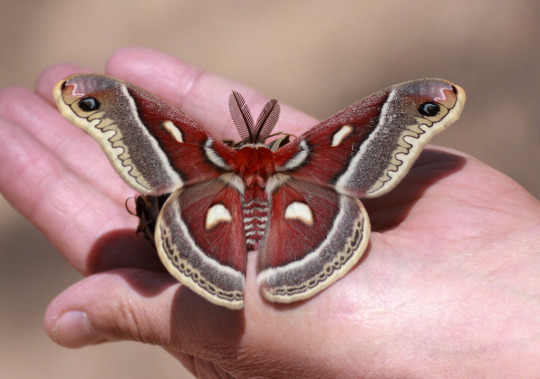
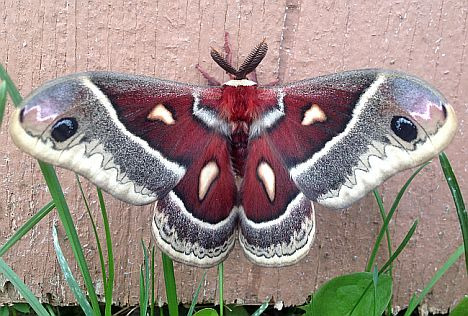
Image sources: [1] [2]
#moth#moths#lepidopterology#lepidoptera#nature#pretty moth#insect#bugs#moth of the day#motd#lepidoptery#entomology#bugblr#bug#insects#beautiful moth#hyalophora gloveri#glovers silkmoth#saturniidae#saturniidae moth#saturniid
555 notes
·
View notes
Text
December 15th, 2023

Northern Rock Crawler (Grylloblatta campodeiformi)
Distribution: Populations are found in southeastern British Columbia, southwestern Alberta, eastern Washington, northern Idaho and western and southern Montana.
Habitat: Exclusively found in high altitude regions, on mountains above the treeline; prefer colder areas, such as the edges of glacial bogs hidden in moss, wood or buried under piles of rocks or pebbles.
Diet: Adults are predators and scavengers, feeding on small invertebrates and parts of insects carried by the wind. Larvae scavenge dead insects or feed on plant tissues.
Description: Northern rock crawlers are extremophiles, living exclusively in cold temperatures; while they can tolerate temperatures of up to 20,5⁰C, they're most active around 0⁰C (though they will die if they're exposed to freezing temperatures for too long). They were first discovered in the Canadian Rockies, on the top of Sulphur mountain, Alberta, at an altitude of 6500 feet. Larvae take up to seven years to reach adulthood, possibly due to a slowed metabolism from their cold habitat.
(Image by James Telford)
59 notes
·
View notes
Text

Unit 01 Blog Post
I believe my current relationship with nature is very strong and nature itself means so much to me. As I grew up, my parents always took me and my sister camping up in Northern Ontario. We camped at parks like Lake Superior, and Sleeping Giant. As I got older and was able to make more of my own decisions, I decided to work at Algonquin Provincial Park for the summers of 2020 and 2021. During those two summers, I learned that nature will always be a part of who I am, and that to be content with my life, I need access to natural areas. For 2 years I lived and worked in one of the most beautiful parks in our country. I went camping every set of days off I could, did hikes every single night after work, and relaxed at secret lakes very few people know even exist. There is just something about the exploration of an area where there is very few other people nearby. That feeling of being truly alone in nature is what I crave when I go on my camping trips. Being truly isolated from the outside world allows me to really think about my life, and allows me to reflect upon myself positively. Every time I return from a camping trip I feel sad that it is over, but also refreshed and grateful to live in a country where natural areas are valued inherently. I now work for the Environmental Services Department with a Municipality in southern Ontario. Although I am a few hours away from the main areas where I enjoy camping, I still make sure to get up north every few weeks. My introduction to nature at the beginning of my life would have to be thanks to my parents. They too have an undeniable passion for natural areas and have instilled those values into me. So for who offered me a “sense of place” I would have to say my parents.
I have attached a picture to this post. The picture is of me in October 2022 when my sister and I went camping in Jasper National Park, in Alberta. This was one of my favourite trips I've ever been on, considering I'm used to camping in Ontario. Seeing this insane landscape made me grateful to live in such a beautiful country. Every time I look back at pictures from this trip I realize how varied the Canadian landscape is. From the prairies to the Arctic Ocean to the rocky mountains, Canada is truly a beautiful place and the place to be for nature lovers.
7 notes
·
View notes
Note
You may have already made a post about this so sorry if so, but what are your headcanons regarding how Matt and Katya met? And how they kept touch over the years?
Love your content btw!!
Thank you! And actually, somehow, no one has asked me that on any of the blogs! I had to think and coalesce some thoughts. This got long so I am going to split it into two parts but their meeting!
The Trans-Canada railway was completed in the 1880s and finally opened up what was called the ‘last best west.’ Between the Canadian Rockies in the far west and the western edge of the woodlands that define eastern Canada in Manitoba, the prairies stretch out in what looks to a child of the eastern woodlands like a vast treeless void. Grasslands and steppes are incredibly ecologically important, but I am ethnically a clinker-built canoe lover, and they scare the shit out of me. Judging by settlement patterns, most French Canadians agreed. As the American West closed, some Americans were willing to join Canadians and take land ripped from indigenous peoples too. Alberta was a result. Concerned about American settlement, in 1896, the Dominion of Canada’s federal government coordinated with the foreign office of the British Empire to look for more settlers. At the same time, in what was then the Austro-Hungarian empire, Galicia was likely the poorest place in continental Europe, with the only other comparable example being famine-era Ireland. The other Ukrainian-speaking areas of the Austro-Hungarian empire (75-80 of that territory was held by the Russian Empire) weren’t much better off. Each government found a solution in the other. Britain, representing Anglo-dominated Canada, and the Austrians shook hands, and the flow began. The US saw the largest share of Eastern European immigration in this period, but the majority who sailed to Canada were Ukrainians. And even before immigration, the region's international ties were based on Canadian financial interests. So, what does this mean for Katya and Matt?
The scene I imagine is that while the powerful wheel and deal, two products of empire crossed paths. One of these meetings may have taken place during a summer folk festival. Girls wove wreaths of flowers into their hair and floated others down the river. Songs were sung, vodka and wine flowed, and dancers joined hands. While the Austrians and the British bargained, a young man not so far removed from his peasant roots and his own saint’s day celebrated with fire and river wandered into the edge of a valley clearing at the end of the longest day of the northern year. As a maple or spruce was decorated, the sun sank, and the last light of day fell like fire light onto a Carpathian river valley. Bonfires were lit. Against a world on fire, a child of the woodlands looked upon the silhouette of his future, crowned with birchwood silver woven into her braids. Katya sensed him, a being like herself from across the world and turned. She looked at him a long moment, with eyes belonging to a world since passed set in the face that would one day be the image that sprang into Matthew’s mind when he needed to summon a memory of home that would not cleave him in two. She bid him to approach and, with one gesture, changed their fates.
Later, he would find out she spoke the court French of his earliest years, but this night, there is only Katya’s outstretched hand and burning blue eyes reflecting fire and Matt’s fingers lacing into hers to spin in the dance of all the other young men and women. There is no discussion of soil and wheat, nor opportunity and affection. There is only alcohol, laughter, music, fire and spinning, his mouth full of her language, unknown but already familiar. There is only a lightening of her eyes as she enjoys herself, her head flung back in laughter as he chokes on pear horilka stronger and sweeter than any whiskey he’s ever made. Her wreath topples out of her hair, and she bursts into laughter as he snatches it up and runs, calling over his shoulder, and she hikes up her skirts and follows, hand outstretched, only to grasp onto him and run, stride long and confident as they leap together to make it over the bonfire.
Still, together, hands clasped, his right her and left and left touching the laurel wreath, the last symbol she indulges from her Varangian roots. Eye contact, a significance, a weight that will one day balance the heaviness of history. She will press his heart into the shape of hers with that weight. He will give it back in every way he can, the ballast of whatever love she’ll let him give. But for now, in the last light of day, there is only a young man and a young woman hand in hand, circling a fire under a night sky. Here, they are under a star-streaked Milky Way that gives way to a mead moon rising over the mountains. Someday, save them; that moon will be the only witness to this night when mortality leaves alive only a man, a woman, and their most human memory.
#the ask box || probis pateo#canukr#katya || бо лишало на серці сліди#matthew || my country is winter#katya and matt || the soil of our souls#hws ukraine#hws canada
49 notes
·
View notes
Text
After that we went to The Northern Lights Wildlife Wolf Centre. There are 7 wolves at the centre of various ages, and all have been rescued from zoos or orphaned, so would not have survived in the wild. There was a 25 min presentation on all things wolfish which was interesting. There was an interesting bit on how wolves keep the balance of eco systems in check being an apex predator. They predominantly eat anything that has horns, bison, elk moose, deer etc. They usually prey on the weak, elderly and injured and by doing so they actually increase the strength and genes of those remaining. Yellowstone National Park had a problem in the 1950's where hunting had been allowed and the wolves had all been killed off. This in turn meant that the significant increase in the animals they preyed on affected the whole ecosystem. They ate all the vegetation, became genetically weaker and affected things like wetlands, beavers, plant species etc and the whole area was in decline. This was identified by a guy around 1950 who reported his findings to the Government. They duly ignored it until 1995 when things had got even worse. They obtained 31 wolves from the Canadian Government, reintroduced them to Yellowstone and within 6 years the whole ecosystem had turned around, and the wolf population has now increased to around 350.
Great a success story there.
Now move onto Canada and the present day. The Rockies are located in Alberta and British Columbia and guess what, the Wolf population is in serious decline due to their hunting being allowed uncontrolled. Why, because the caribou, moose and elk populations are also in decline and the powers that be blame the wolves. Also the ecosystem is starting to go the way of Yellowstone.
Now the biggest industry in western Canada is logging and the biggest and oldest trees make best lumber. The problem is that lichen, which takes 10's or 100's of years to grow on trees in any quantity, grows on trees and caribou moose and elk eat lichen. By cutting down all the older larger trees their food supply has been signicantly reduced, hence their decline in numbers. The government blame the wolves so allows hunting of them. Has the moose et population started to increase? No, numbers are still in decline but the Goverment fails to accept evidence that the uncontrolled hunting of wolves, and their decrease in numbers is not the problem. Also to ban or limit logging in the affected area is unthinkable due to the financial cost and lobbying of the industry.
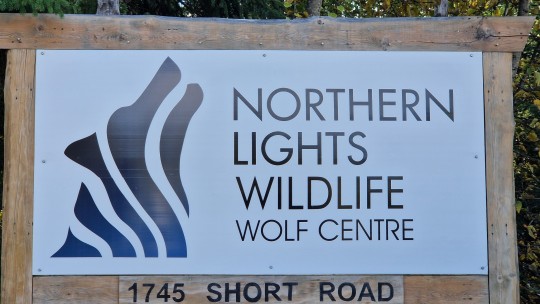

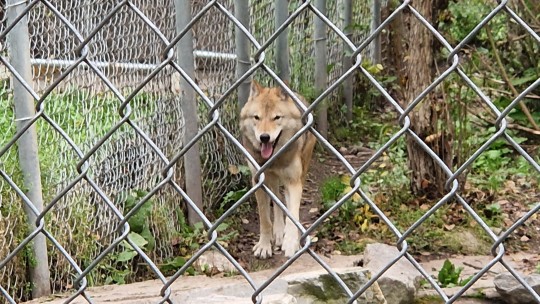
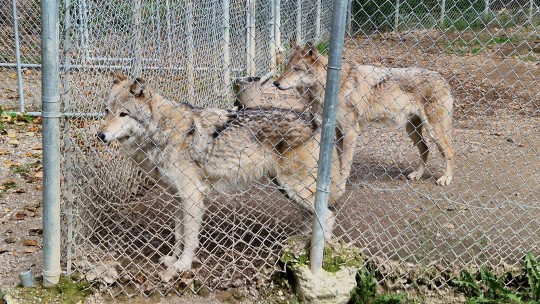
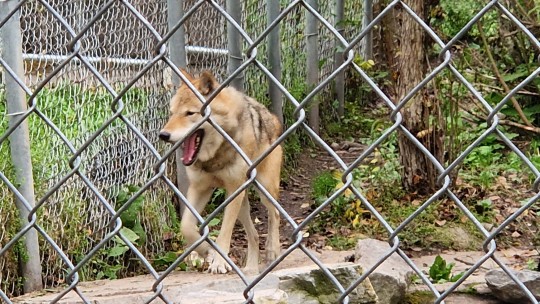

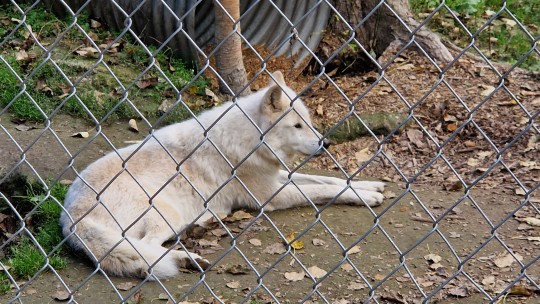
Yellowstone all over again, but 100 years later!!!
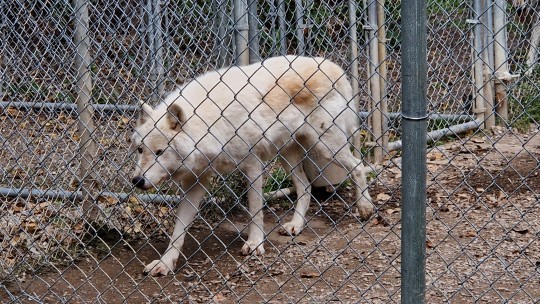
5 notes
·
View notes
Text
youtube
The Untold History of the Blackfeet Native American Tribe
The Blackfeet Nation, also known as Niitsitapi or the Blackfoot Confederacy, was an Indigenous community once inhabited the northern Great Plains of North America, primarily spanning present-day Montana, Alberta, and Saskatchewan.
Their history unfolds as a multifaceted narrative that spans millennia. The Blackfeet are thought to have undertaken a migration to the Great Plains from the northwest, possibly as early as 10,000 years ago. Initially affiliated with a larger Algonquin-speaking group, they gradually developed a distinctive language and culture.
As a people deeply intertwined with the natural landscape of the northern Great Plains and the Rocky Mountains, the ancient Blackfeet culture was characterized by a profound connection to the land, a nomadic way of life, and a wealth of spiritual and social traditions.
#The Untold History of the Blackfeet Native American Tribe#Black#Black Native Americans#Black Lives Matter#Black History Matters#american history#Blackfeet Indians#Youtube
8 notes
·
View notes
Text
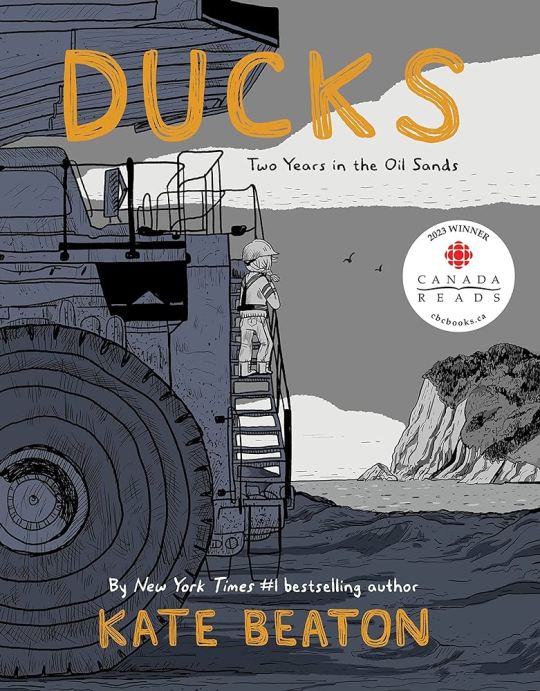
Ducks: Two Years in the Oil Sands. By Kate Beaton. Drawn and Quarterly, 2022.
Rating: 4.5/5 stars
Genre: graphic memoir
Series: N/A
Summary: Before there was Kate Beaton, New York Times bestselling cartoonist of Hark A Vagrant fame, there was Katie Beaton of the Cape Breton Beatons, specifically Mabou, a tight-knit seaside community where the lobster is as abundant as beaches, fiddles, and Gaelic folk songs. After university, Beaton heads out west to take advantage of Alberta’s oil rush, part of the long tradition of East Coasters who seek gainful employment elsewhere when they can't find it in the homeland they love so much. With the singular goal of paying off her student loans, what the journey will actually cost Beaton will be far more than she anticipates.
Arriving in Fort McMurray, Beaton finds work in the lucrative camps owned and operated by the world’s largest oil companies. Being one of the few women among thousands of men, the culture shock is palpable. It does not hit home until she moves to a spartan, isolated worksite for higher pay. She encounters the harsh reality of life in the oil sands where trauma is an everyday occurrence yet never discussed. Her wounds may never heal.
Beaton’s natural cartooning prowess is on full display as she draws colossal machinery and mammoth vehicles set against a sublime Albertan backdrop of wildlife, Northern Lights, and Rocky Mountains. Her first full-length graphic narrative, Ducks: Two Years in the Oil Sands is an untold story of Canada: a country that prides itself on its egalitarian ethos and natural beauty while simultaneously exploiting both the riches of its land and the humanity of its people.
***Full review below***
CONTENT WARNINGS: sexual harassment, rape
I was familiar with Kate Beaton's series Hark! A Vagrant before reading this book. I didn't know much about her or her life, but I was charmed by her comics, so I decided to pick up this memoir to see what she could do with a related genre (through still graphic in nature).
The first thing I was struck by was Beaton's masterful depiction of identity and community. Where a person is from in Canada matters more than I realized and is integral to one's sense of self, and I admire the way Beaton reflects that on the page through things like accent, music, etc.
Another thing that struck me was Beaton's sense of empathy. The camps, as she describes, are liminal spaces that wreak havoc on mental health, and I think Beaton portrayed that deftly without sensationalizing it. I was also touched by the way she portrayed trauma and how she portrays herself grappling with the after effects of her assaults, highlighting how people's lives can be changed in an instant.
I'm also glad that Beaton took the time to acknowledge the harm oil sands do to Indigenous communities. In her afterward, Beaton talks about how her experience was overwhelmingly male and white, and that it is just one way white supremacy/settler colonialism manifests.
Lastly, I think Beaton did a wonderful job integrating her personal art style with a structured narrative. I like the way Beaton's simple style delivers a lot of pathos through expressive body language, and the almost monochrome color palette creates a kind of hazy mood. Beaton also has a good sense of pacing and how to set up a scene, so the reading experience is fluid and easy to follow.
TL;DR: Ducks is a graphic memoir that takes a hard look at the effects capitalism has on the working class, noting how oil companies exploit itinerant workers and create both environmental and mental health problems.
5 notes
·
View notes
Text
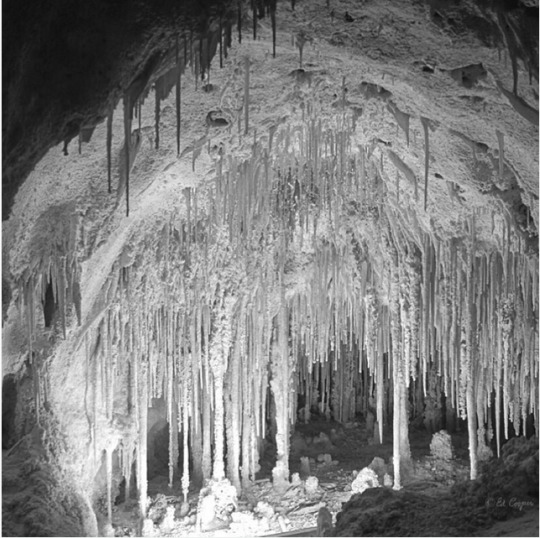

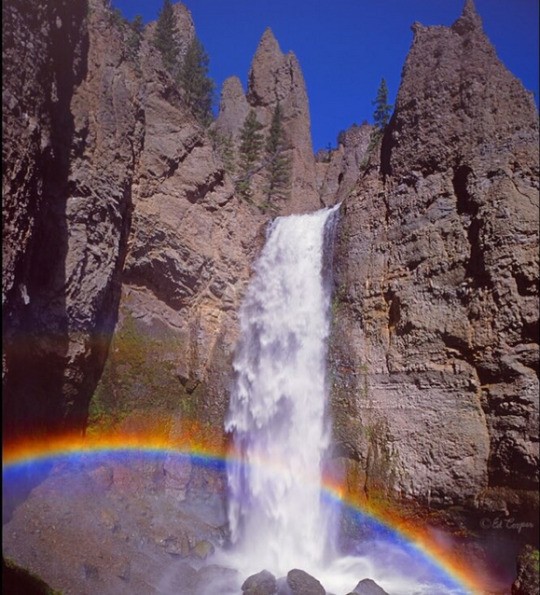


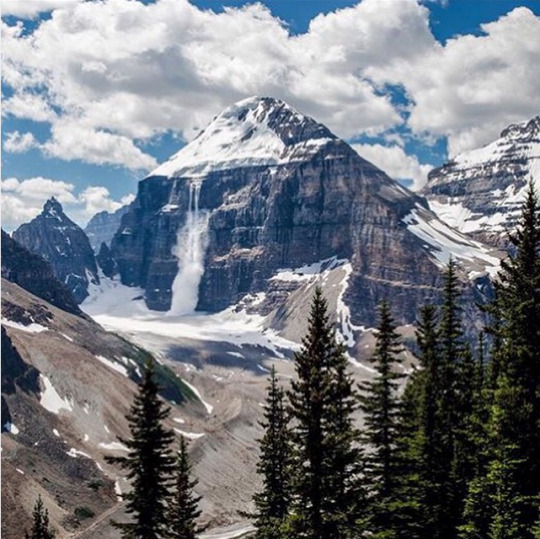

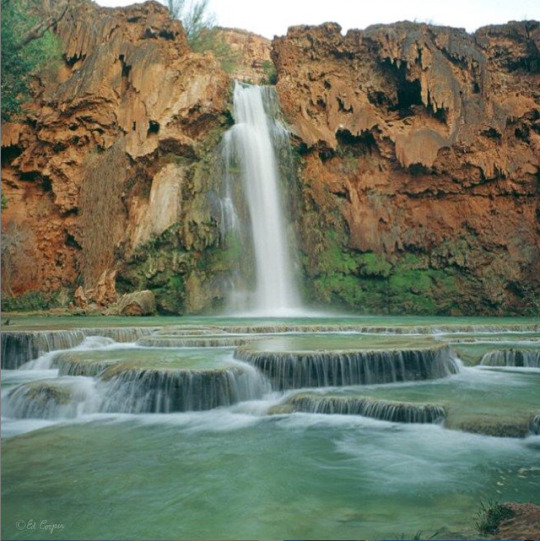
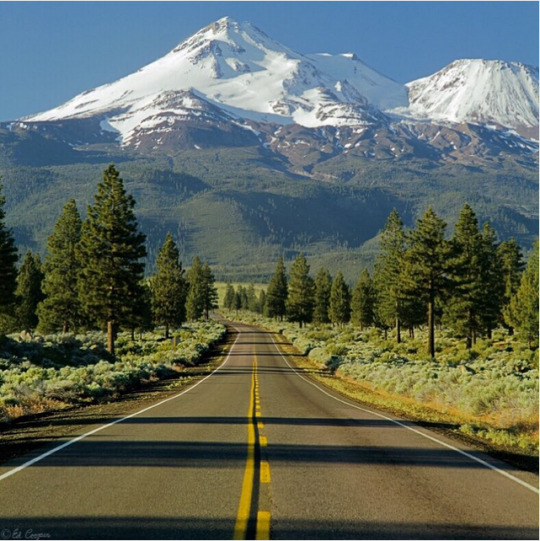
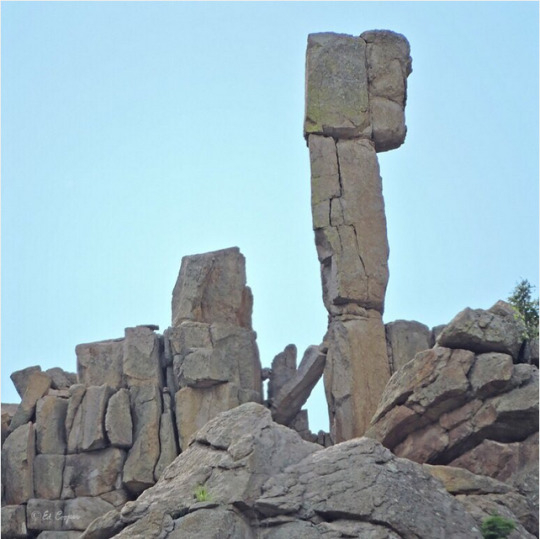
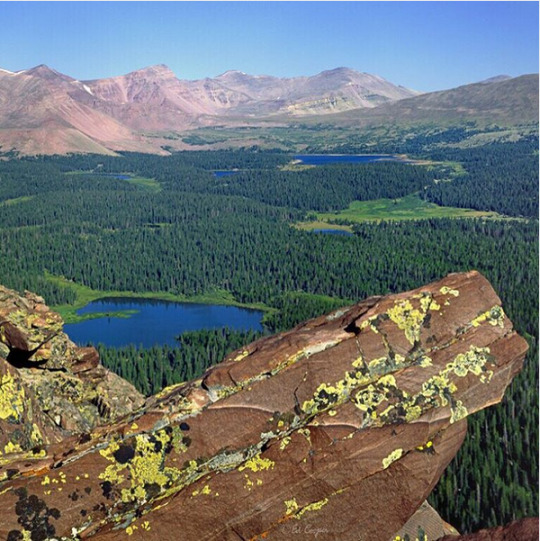
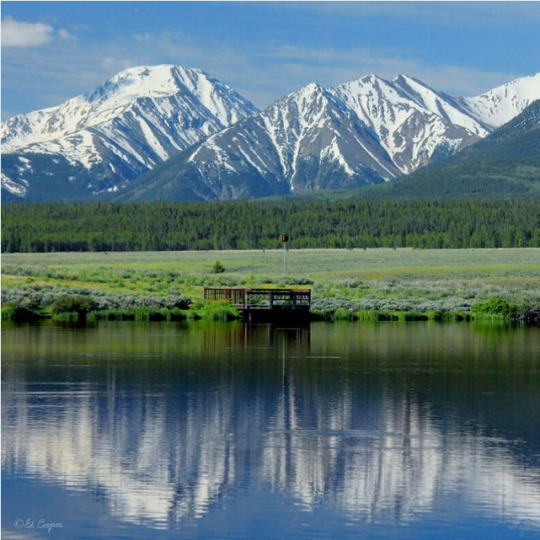
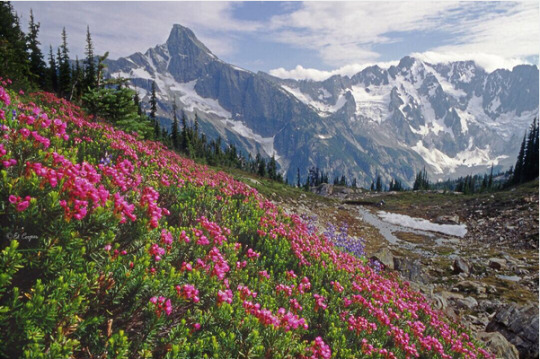



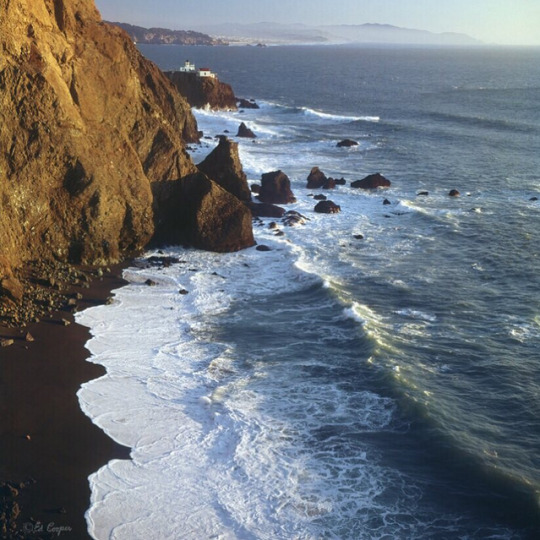
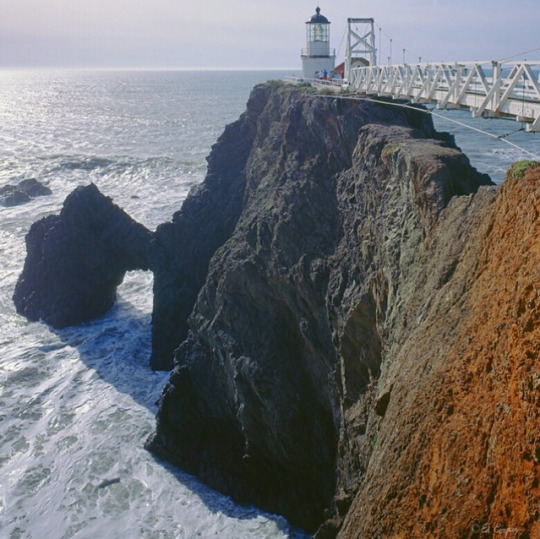
Photos and texts: @ed_cooper_photography
1-. Here we see the slightly creepy and surreal Dolls Theater formation, in Big Room Cave, Carlsbad Caverns NAtional Park. New Mexico. Image taken Feb. 1975!
2-. Here we seen sunrise on El Morro, rising about 60m, above the valley floor, located in El Morro National Monument, New Mexico
3-. Tower fall, 40m., with a rainbow, in the northeast part of Yellowstone National Park, Wyoming. This waterfall is in the Absaroka Mountain Range and feeds the Yellowstone River
4-. Here we see a mule deer, Odocoileus hemionus, taken yesterday right next to our home here on Sonoma Mountain, California, in the Cooper Biological Preserve
5-. A Confederate wall carving by Augustus Lukeman of, left to right, Jefferson davis, Robert E. Lee & Stonewall Jackson on Stone Mountain, Georgia
6-. Canadian Rockies
7-. El Morro Nat. Monument. New Mexico
8-. Havasu Falls, in the Havasupai Indian reservation, in the Grand Canyon (but not in the national park)
9-. Here we see a road leading us to Mt. Shasta (4317m.), in the northern part of California
10-. Here we see a rock pinnacle in the Cimarron Palisades, Cimarron Canyon State Park, New Mexico
11-. Here we see King's Peak, 4123m., the highest peak in the state of Utah, in the high pristine Uintas Wilderness Area
12-. Here we see Mt. Hope (4217m), reflected in a pond in Arkansas Headwaters Recreation Area, Colorado (13-6-2014)
13-. Here we see Pink Mountain Heather, in the Northern Picket Range, of North Cascades Nationa Park, Washington
14-. Here we see Rodeo Beach with Sea Fig Ice Plant in the foreground, in the Marin Headlands, Golden Gate National Recreation Area, just north of San Francisco, California
15-. Here we see the amazing Valley of Ten Peaks, in Banff National Park, Alberta, Canada
16-. Here we see the China Wall formation in Slaughter Canyon Cave (new cave) in Carlsbad Caverns National Park. New Mexico - Feb. 1975
17-. Here we see the lighthouse and Black Sand Beach at Point Bonita, in the Marin Headlands, Golden Gate National Recreation Area, just north of San Francisco, California
18-. Here we see the lighthouse and natural rock arch at Point Bonita, in the Marin Headlands, Golden Gate National Recreation Area, just north of San Francisco, California
2 notes
·
View notes
Text

I see this view everyday but it never gets old
1 note
·
View note
Text












Jasper National Park, AB (No. 21)
The Rocky Mountain elk (Cervus canadensis nelsoni) is a subspecies of elk found in the Rocky Mountains and adjacent ranges of Western North America.
The winter ranges are most common in open forests and floodplain marshes in the lower elevations. In the summer it migrates to the subalpine forests and alpine basins. Elk have a diverse habitat range that they can reside in but are most often found in forest and forest edge habitat and in mountain regions they often stay in higher elevations during warmer months and migrate down lower in the winter. They may even come down the mountain and leave the forest into some grassland for part of the day but head back into the timber in the evening.
Climate change/warming can keep elk in their higher elevation habitats for longer into the winter than normal. Climate changes such as warming have in some cases even increased the seasonal range of elk in the winter. For example, in Yellowstone the climate warming has kept the snow at a lower level than in the past and has given the elk the ability to populate higher ranges than before. The lack of snow in Yellowstone has also given the elk an advantage over the wolves in their predator prey relationship because wolves rely on deep snow to hunt elk in winter ranges of Yellowstone. The total wild population is about one million individuals.
Their populated Canadian ranges occur in Alberta's Jasper and Banff National Parks as well as British Columbia's Kootenay and Yoho National Parks.
Source: Wikipedia
#Pyramid Island#Rocky Mountains#Northern Rockies#Alberta's Rockies#travel#original photography#vacation#tourist attraction#landmark#landscape#summer 2023#Canada#woods#forest#flora#nature#countryside#fir#pine#Jasper National Park#UNESCO World Heritage Site#Pyramid Lake#Pyramid Mountain#lake shore#evening light#Rocky Mountain elk#wildlife#animal#Cervus canadensis nelsoni
36 notes
·
View notes
Text
Exploring Canada's Natural Wonders
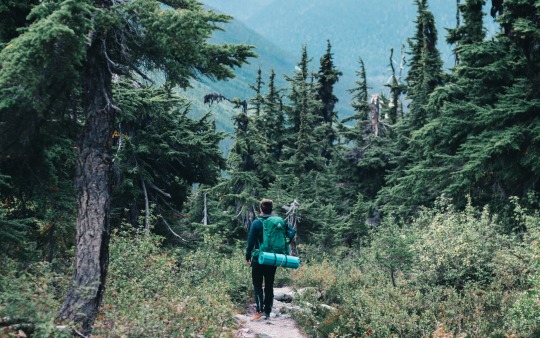
Canada is an ideal travel destination for nature enthusiasts and adventurers, boasting vast and diverse landscapes. From the majestic Rocky Mountains to the rugged coastal cliffs on the Atlantic, Canada's natural wonders offer a breathtaking array of experiences that are as awe-inspiring as they are unforgettable.
Niagara Falls, one of the world's most famous natural wonders, is a majestic sight that any visitor should experience. The power and beauty of the waterfalls straddling the Canadian and American borders are awe-inspiring. Visitors can join the Maid of the Mist boat tour for a closer look at the impressive falls, enjoy a panoramic view from the Skylon Tower observation deck, or hike in Niagara Glen.
Banff National Park, situated in the heart of the Rocky Mountains, showcases Canada's breathtaking alpine scenery. The stunning landscape of towering peaks, turquoise glacial lakes, and lush valleys looks like something out of a fairy tale. Lake Louise, a beautiful jewel of the park, is famous for its crystal-clear waters that reflect the surrounding peaks. The smaller Lake Moraine is no less stunning, with its turquoise waters surrounded by snowcapped peaks. The park offers many adventure opportunities, like hiking through pine forests, biking along scenic trails, and paddling around the lakes.
For travelers looking to explore the coast of Nova Scotia, the Cabot Trail is a picturesque highway winding through the Cape Breton Highlands and offering breathtaking views of the Gulf of St. Lawrence and the Atlantic Ocean. The Cabot Trail is spectacular, with its rocky cliffs, verdant woods, and quaint seaside towns. Visitors can explore hiking trails like the Skyline Trail for panoramic coastline views or join whale-watching tours to see marine life up close.
On the east coast, in Newfoundland and Labrador, lies Gros Morne National Park, a UNESCO World Heritage Site showcasing the raw beauty of the Atlantic region. The dramatic landscapes here include fjords, towering cliffs, and dense forests reminiscent of Norwegian landscapes. The Tablelands, a striking feature of the park, offers a unique glimpse into the Earth's mantle, with its exposed reddish rocks. Adventurers can explore many hiking trails, like the Gros Morne Mountain trail, for panoramic views of the surrounding landscape.
The Great Bear Rainforest on the west coast of British Columbia is a stunning example of natural beauty and power. This untouched rainforest is home to Canada's most beloved wildlife, such as the rare Kermode bear, also known as the "spirit bear." The rainforest boasts towering ancient trees, waterfalls, and fjords cutting through the coastline. Travelers can join wildlife-viewing safaris, boat rides through the glacial fjords, or guided nature walks.
Lastly, Canada is an ideal destination for watching the Northern Lights. The elusive and breathtaking phenomenon draws thousands of visitors to many countries in the Northern Hemisphere, and Canada provides several areas with high chances of spotting the stunning natural phenomenon. The Northern Territories, Manitoba, Yukon, and Nunavut are popular spots to watch the aurora borealis from autumn to spring. Newfoundland and Labrador, Ontario, and Alberta are other regions where travelers can experience the dancing lights, especially away from the cities.
Whether seeking adventure, tranquility, or a chance to marvel at extraordinary landscapes, travelers will find it in Canada's natural wonders. The primary requirements to embark on an unforgettable journey to explore Canada's natural marvels are well-equipped bags and hiking boots.
2 notes
·
View notes
Text
An epilogue
Canada was great and in many ways not how we expected it to be. For one thing, the weather was good, warm, sunny and dry. We were able to join in the celebrations of Canada Day in shorts beside the lake in the heat. Constitution Act of 1867 signed off by Queen Victoria created Canada, formally joining several colonies into a single, unified, semi-independent Dominion of Canada. Essentially, Canada became a self-governing dominion within the British Empire on the 1st July 156 years ago. And to some extent, Canada as an entity was something we found odd. Why did it never join the USA (some say Alberta would like to become the 51st State of the USA), why did the US buy Alaska above Canada in 1867, incidentally the same year Canada was created, and why do half the people still speak French despite the French being licked by the British in the Battle of Quebec in 1759? Well I don't think anyone knows. It's odd thinking of a French speaker as Canadian and not, well, French. The second largest country in the world and the longest border with another country in the world. Shoreline on 3 oceans and just 40 million or so population. The Rockies were like a massive version of the Lake District and Norwegian Fjords superimposed onto the Alps. Alaska reminded me very much of Norway. Equally stunning in its own way with tiny communities happily coexisting in their geographically imposed isolation with whales and fish as company but invaded regularly by vast armies of cruise ship guests many times in number greater than their own population. Canadians were lovely, pleasant, polite people; we called them nice Americans. They seemed very like the English in being almost apologetic of their country and sometimes it seemed not realising just how good it is. It is easy to overlook though the reality that this lovely place, basking in 30° heat will soon be shivering in temperatures as low as -30° in those dark winter days. I couldn't live in that. We covered a lot of road miles seeing the foothills gradually convert to rocky mountains and then seeing them from a different perspective from the massive picture windows of the brilliant Rock Mountaineer railway. We have seen a shed load of Bald Eagles, Ospreys, Whales, Elk, Ground Hogs, Chipmunks and just two Bears. We have discovered that British Columbia produces a very fine SB and it was a great delight to sit on the terrace of a small independent winery drinking some of its output. Who'd have thought that Canada could have rainforest, huge fruit growing communities and a dry, arid desert. Apart from the hiatus caused in the first week by a rampant Cockerel on steroids and the forest fire which caused a radical change in itinerary, we have had a great time. We most likely will not return to the Rockies, but we are intrigued by what we might see were we to peer over the top of the mountains and looked east at Québec (pronounced keybeck by locals) and beyond to the coast at Nova Scotia.
In the meantime, greeting us in our mailbox on our return was the Lonely Planet guide to Northern Territories. There's something to think about.
3 notes
·
View notes
Text
where'd the yellowjackets crash? an attempt at narrowing the location down.
first off, this incredible video gives us the best look at flight 2525's flight path.
granted the plane 'vanishes' before we see the whole path, but with some snips tool extrapolation and the knowledge was that the flight was intended to take them to seattle, this is a decent estimation of the flight the plane was intended to take. (please forgive my wobbly line)

(cut for length)
so. we know from 101 that the plane veered north of its intended flight path (~45:30, 101), but in 201, a reporter states that the girls were found "over 600 miles north of their intended flight path." (~6:05m, 201) therefore, intended path is the only thing that matters here. we'll get back to the 600 mile line in a minute.
first: look to the north. nothing below the estimated flight path should be considered.
next, geography: we know the girls crash in the mountains. therefore anything east of the rockies in alberta and west of the cascades in british columbia is out of the question. to be more specific, the pilot in 101 namedrops the "canadian rockies" (~45:35, 101), so we should assume they're there, rather than the cascades.
specifically, we should be looking somewhere in this zone and further north.
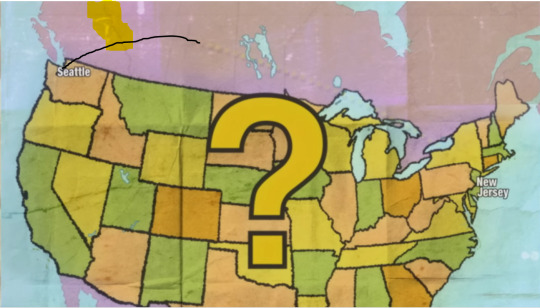
now, back to the 600 mile line. the girls were found at or a little ways above 600 mi north / 965.6 km. if you want to get anal about it, they'd say 'almost 700 miles north' (1126.5 km) if it were in the high 600s so i'm leaning towards the low to middle 600 mark. but that's just me.
but we need to cast a wide net first. 600+ mi actually scrapes right up against the edge of mr kurt loder's map. so we'll switch to this one from here on out.
again, they're in the mountains. this merits repeating because i used a few canadian towns and cities along the intended flight path, traced roughly 600 mi north of each to get a rough sense of their latitude. i used calgary, radium hot springs, nakusp and kelowna.
so here's the lat estimation. (forgive the wobbly lines x2)

(aside: if we're going for under 700 mi north to further narrow things, here's the upper limit; forgive my wobbly line x3)

but again, i don't want to assume they're being That Exact. over 600 is the best we should work with.
now add the mountains back in. that eliminates anything in alberta, or even just east of saint john, because the mountains don't extend that far north. ergo, the girls are either in british columbia or the yukon territory, or maybe the northwest territories (if they're in the nwt, my money's on the nahanni valley. the right terrain, amt of remoteness and a history of spooky happenings).

so that's that best i can come up with just off that. somewhere in the rockies in northern bc. i unironically can't wait to be proven wrong!
+adding in the 700-mi limit, which again is overthinking it, here's what it looks like. (forgive the wobbly line x infinity)

6 notes
·
View notes